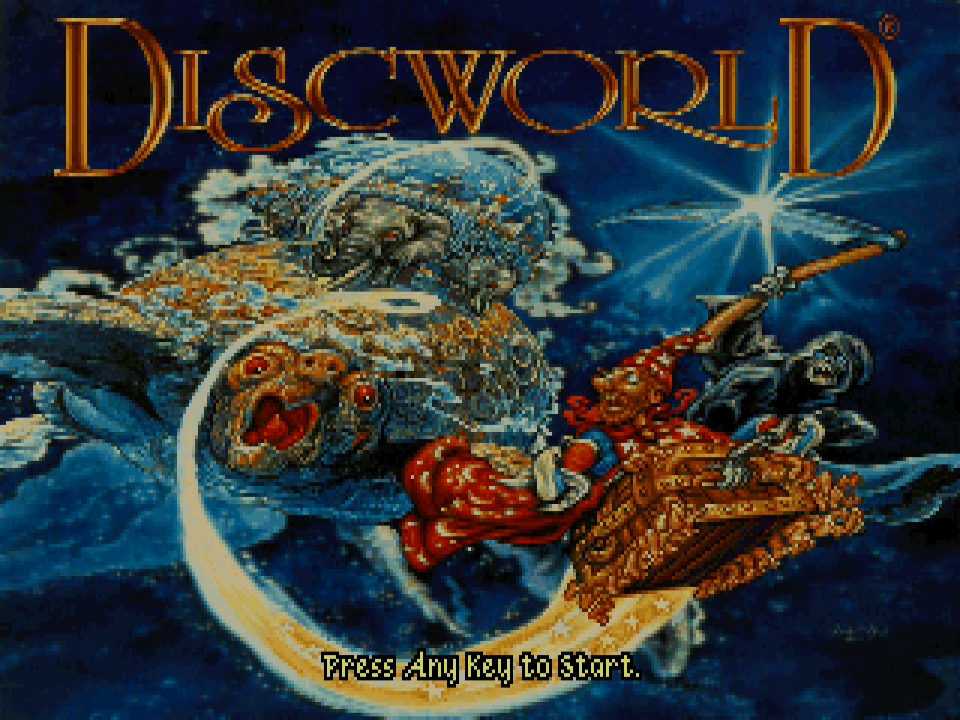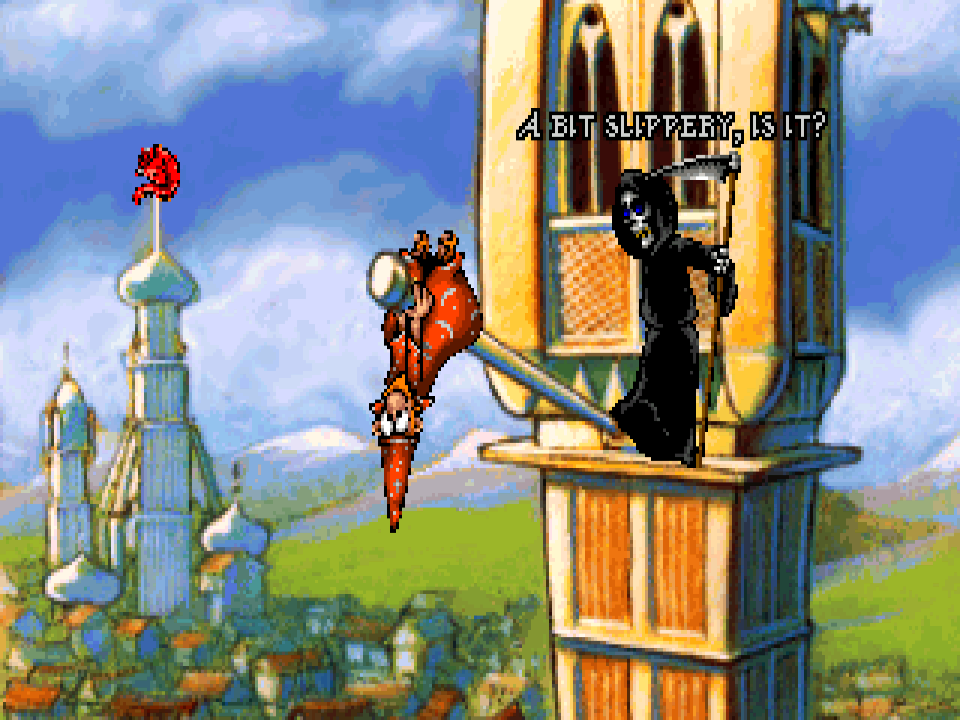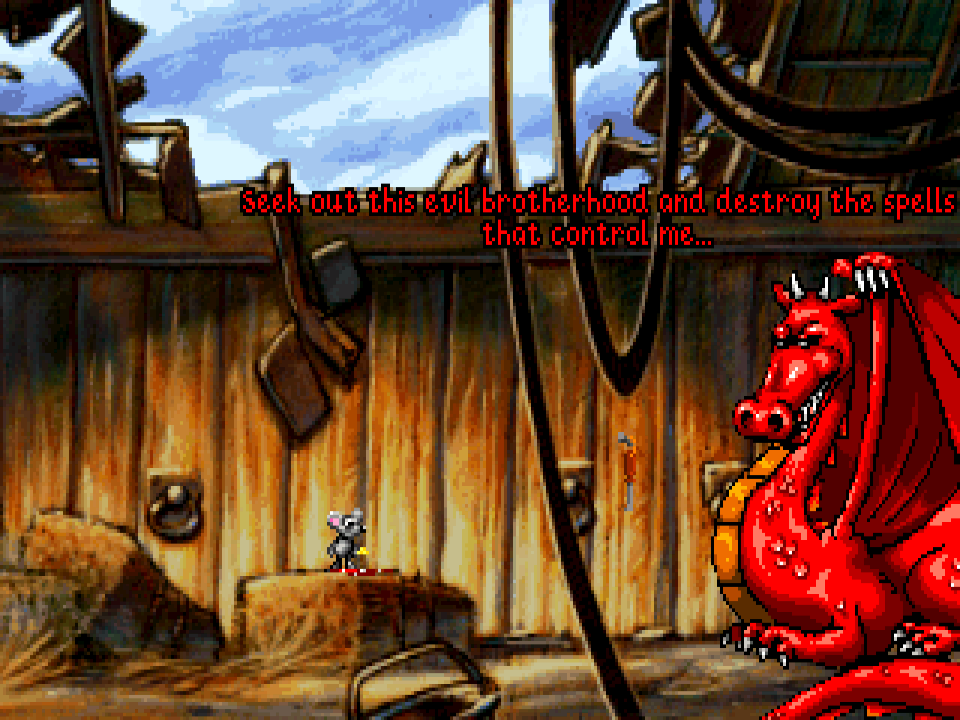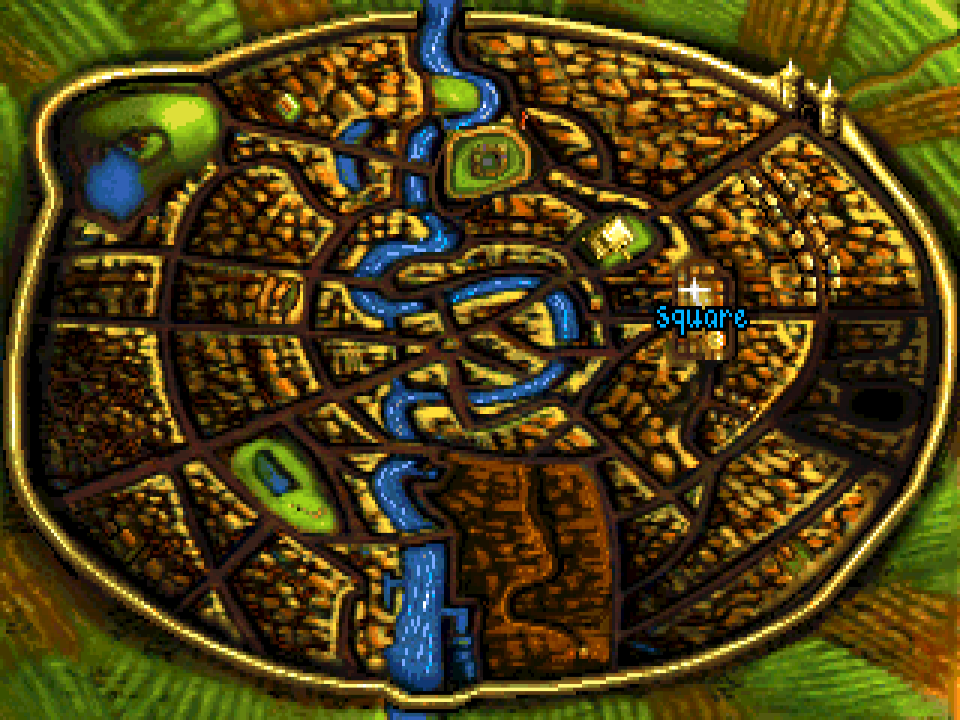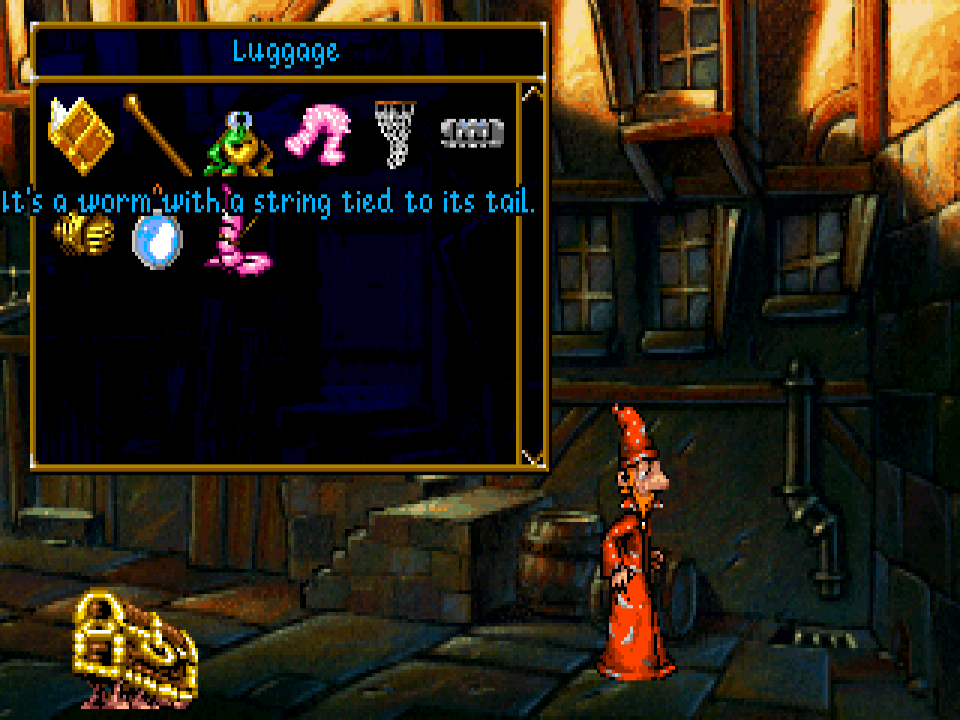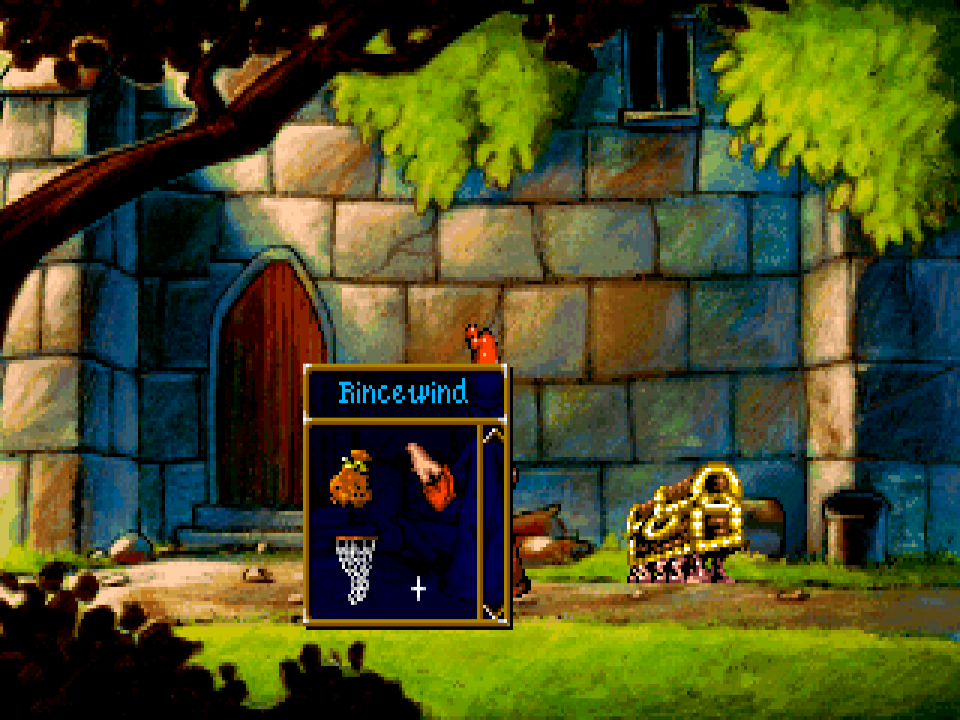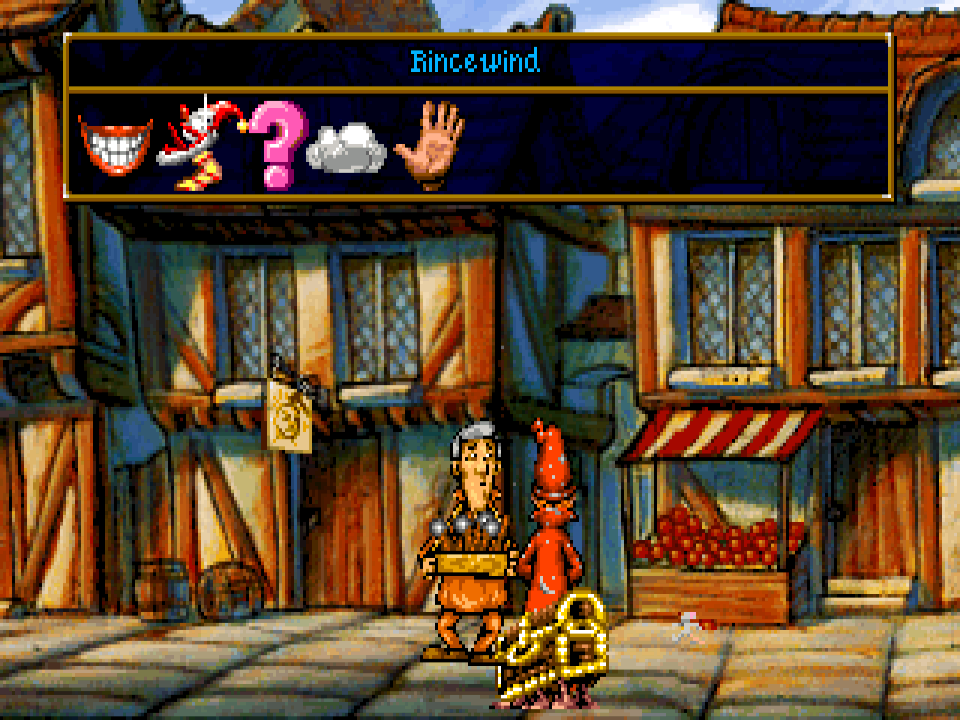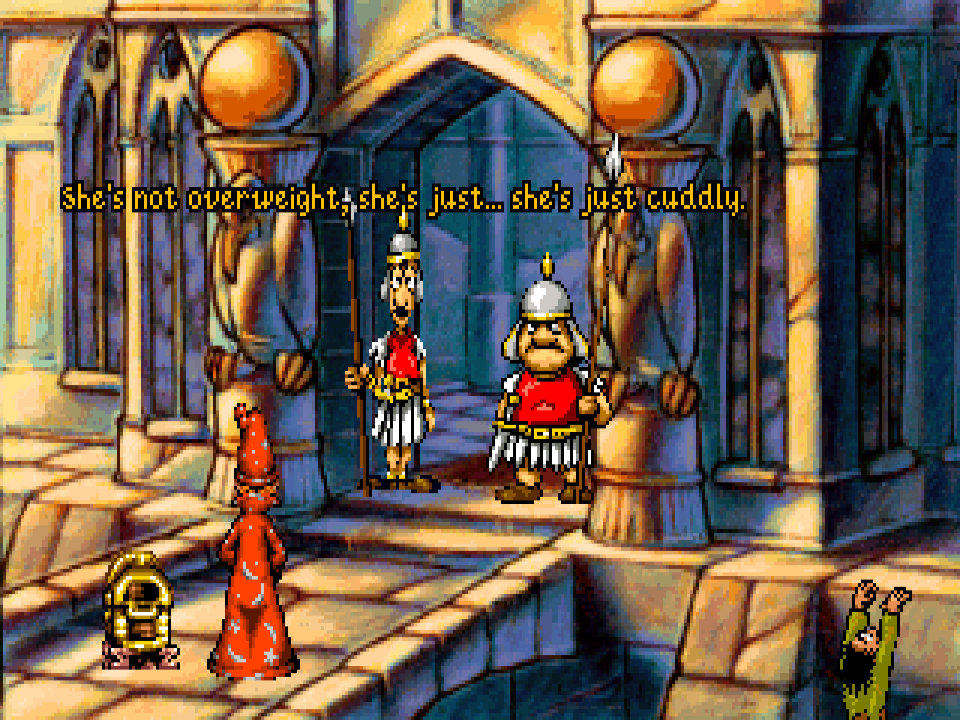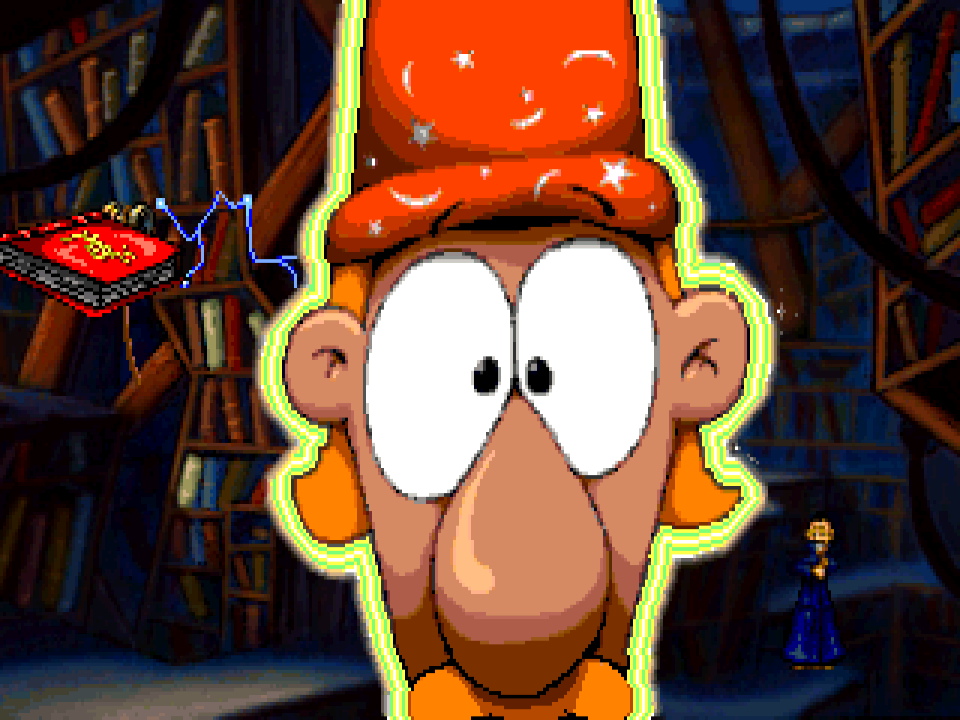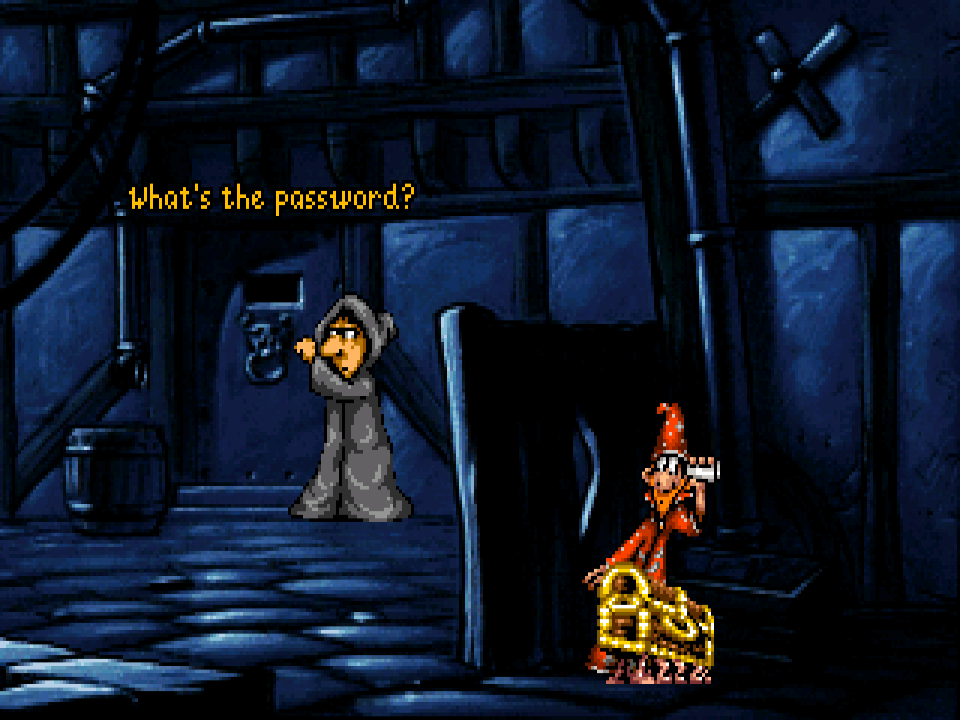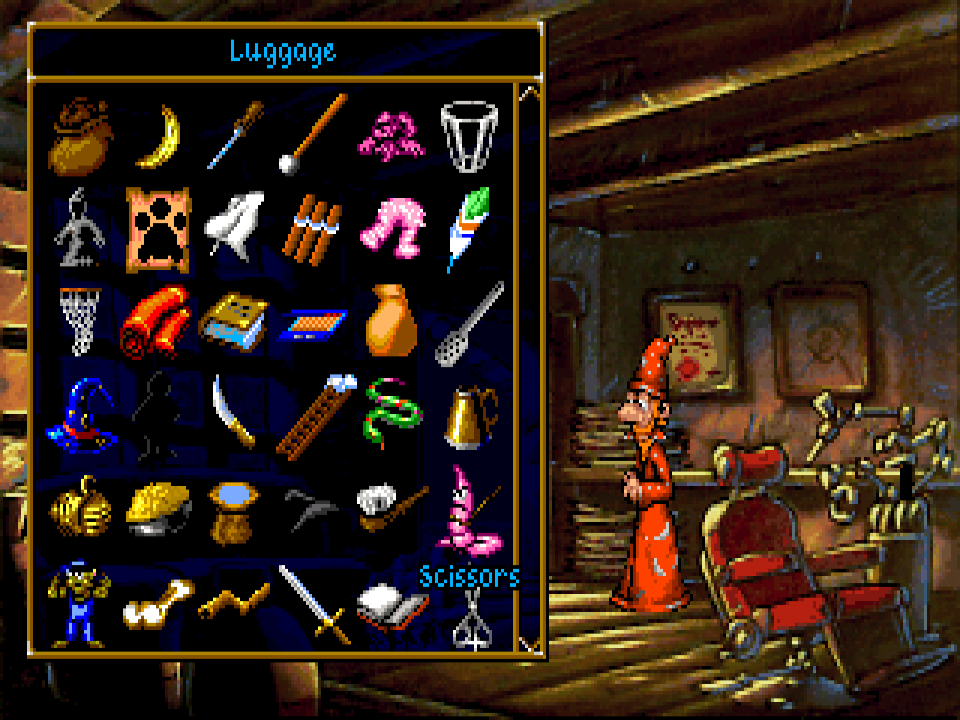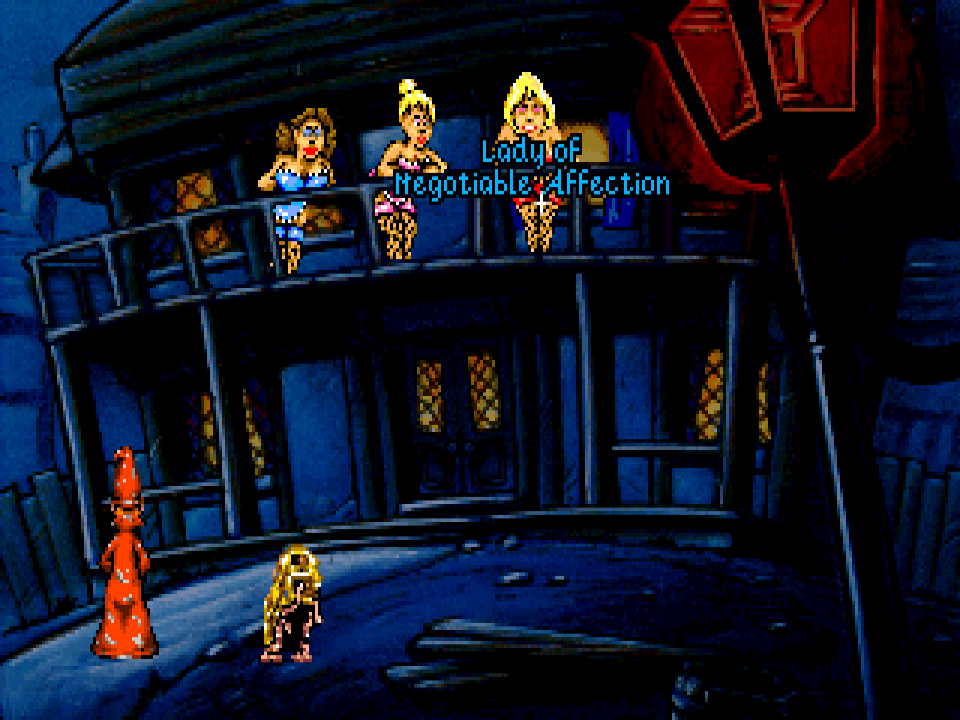Discworld (Teeny Weeny Games/Perfect 10 Productions) - 1995
Series: Let's Adventure! A Journey into Adventure Games (1980-1999)This review is part of the Let's Adventure! series. See all reviewed games sorted by rating here.
- ← Altered Destiny (Accolade) - 1990
- Discworld (Teeny Weeny Games/Perfect 10 Productions) - 1995
- → Jurassic Park (Sega of America) - 1993
Article 82 of 101 in this series.
Discworld is a point-and-click adventure game developed by Teeny Weeny Games and Perfect 10 Productions and published by Psygnosis. It is based on Terry Pratchett’s novels of the same name.
This adventure game puts the player in the shoes of Rincewind, a wizard whose sole purpose in life is to stay alive. He appears to be very good at it as well, because apparently the universe has decided to continuously challenge him. The game takes place in the humorous fantasy world called the Discworld, as it is actually a flat disc carried on the backs of four gigantic elephants, which themselves stand on the back of an even larger turtle.
The story is loosely based on the novel “Guards! Guards!”. Both in the book and the game, a dragon is summoned by a group of mysterious conspirators and now terrorizes the city state of Ankh-Morpork. Being the most expendable wizard of the Unseen University, Rincewind is given the task to get rid of the beast (only in the game though; in the book, the city’s nightwatch has to deal with the problem).1
Discworld is a pretty typical point and click adventure from the mid-90s: the game starts with a brief intro sequence, you’re introduced to the protagonist, you’re given the first (of likely many) fetch quests which you’ll need to complete and you’re on your way.
Over the course of four acts your task is to rid the Discworld of the dragon that the secret brotherhood has summoned. As a wizard of Unseen University, the Archchancellor has decided you’re up to this task so first you’ll need to collect the various elements from around Ankh-Morpork that he needs to build a “dragon detector”.
Every time you leave an area of the game you’ll be returned to the map screen, which is how you navigate between the various game locations. There are a few more locations beyond the main map, but the majority of the game takes place here (both in the past, and in the present).
Throughout the course of the game you’ll pick up a lot of items. Luckily for Rincewind you’re always accompanied by your trusty luggage - which is a treasure chest with a lot of legs. I remember vaguely reading these books when I was a kid and the traveling treasure chest standing out to me as a really interesting character, so I was really hoping it would play a big part in this game once it was introduced.
When you find a new item you can pick up you’ll have the option of adding it to the chest or Rincewind’s inventory. The chest has unlimited storage, whereas Rincewind only has 4 “slots” that you can use.
Inventory management plays a pretty large role in this game as there are several puzzles that require Rincewind to take items with him to a location the chest can’t access. Typically it’s not obvious what you need to bring with you and the will involve trial and error, backtracking and repetition.
Speaking of backtracking, that’s about 90% of the game. You typically need to talk to everyone you possibly can on every screen to get a sense of what fetch quest they’re going to send you on, then head off to fetch said maguffin.
The dialogue system is reminiscent of games of this era such as Sam & Max Hit the Road where a row of icons will be presented that represent various interactions that according to the manual represent actions/moods such as GREETING, QUESTION, SARCASMand ANGER.
Though the gameplay itself can be a bit tedious, the character interactions and descriptions of the world you’re engaging with are fantastic. Monty Python’s Eric Idle voices Rincewind, and really brings the character to life as a dry, witty British stereotype.
There is ever-present background music playing throughout the game, but it just sort of fades into the background. I don’t consider this a bad thing for ambient music as it means it’s essentially just doing it’s job.
In order for Rincewind to solve the mystery of who stole the Dragon Summoning book, uncover the identities of the members of the brotherhood and retrieve the various gold trinkets the dragon has requested, he’ll have to travel back in time.
This is done through the University’s library (following a long series of fetch quests) that opens a door to L-Space. Once you’ve accessed L-Space a new series of puzzles need to be solved - many of them involving making changes in the past to impact the placement or availability of things in the present.
I really liked the mechanic, but found myself getting lost or confused or having to repeatedly go back and forth between the past and preset trying ot suss out exactly what it is I’m trying to do.
Discworld does not hold your hand. The clues can be vague and require you to really think. I don’t believe any knowledge of the books is required to be successful, but I’m sure it couldn’t hurt.
For example, to get the password to the thieve’s hideout you need to turn the drainpipe, hide, then listen to the pipe with a glass. If you don’t use the glass a long sequence plays out that doesn’t make it obvious you didn’t get the password until you try and get into the hideout.
You then need to repeat this trying various items on the drainpipe to see if anything will happen.
Trying everything on everything (including every item on every other item) can be a requirement to progression. There are just so many items you’ll find, an the solution to many puzzles requires either a single item or an item combination puzzle to be solved first - and the solutions are typically not obvious.
This is definitely not a game for kids. There are allusions to adult themes, the writing is complex, the humour is more nuanced and you really have to pay attention to your surroundings and all dialogue to make any progress.
I seem to remember playing this game as a teenager and just not being able to get into it. I was a big Monty Python fan (who wasn’t in the 90’s) so Eric Idle voicing a character really appealed to me … but I just couldn’t make any progress.
If you’re playing in ScummVM there are a number of known bugs, though the game is not really affected too badly. I did hit the Act 4 missing guard crash, but that is easily avoidable by just not engaging a clearly missing background character in conversation.
I really love Terry Pratchett’s writing style and have previously read The Colour of Magic. Having now played through this game I definitely feel like firing up the eReader and diving back into the world of Ankh-Morpork.
There are better adventure games out there that would likely be more approachable, but the story and writing of Discworld definitely stands out.
Game Information
| Game | Discworld |
| Developer | Teeny Weeny Games/Perfect 10 Productions |
| Publisher | Psygnosis |
| Release Date | 1995 |
| Systems | DOS, Mac, PlayStation, Sega Saturn |
| Game Engine | Tinsel |
My Playthrough
| How Long To Beat? | 11 hours |
| Version Played | DOS via ScummVM |
| Notes | Walkthrough |
Score
See here for a refresher on how we’re scoring these games.
| Atmosphere (20) | 14 |
| Story (25) | 19 |
| Experience (15) | 5 |
| Impact (10) | 3 |
| 59% |
Gallery
Footnotes
Description from Moby Games ↩︎
